NOTE: Please read "Author Notes" before you continue. BTW, if you've already found this, you have no need for the information that it is ON PAGE 3 AT THE 70TH POSITION.
A Succinct Sketch of What
Many Have Read, and Perhaps You Should Too:
The preface and Chapter one of How This Critter Crits, describes why I felt the need to develop my personal method of critiquing (critting) manuscripts and why I proudly call myself a critter instead of a reviewer. Chapter two and three explore in a general way the two processes of critting: Macro- and Micro-Critting, and focus in on the former. With macro-critting, I highlight the procedure this critter takes to first choose, then overview the selection. In a nutshell, this includes all that precedes the line-by-line and word-by-word study and enjoyment of the text.
With the chapter you're about to read, we finish macro-critting. We get naked for a good part of it. I hope you enjoy it. I know I did.
MACRO-CRITTING
THE WRAP
It was the spring of 1960 and I was hell-bent on capturing the Pulitzer, or even the Nobel Prize for literature. Better yet I would win the Pulitzer Prize the first year and the Nobel Peace Prize the next. Ambition and self-confidence I owned in spades. That's what enduring the last eighteen months in Tripoli, North Africa—although rent-free and stipend-earned, courtesy of the U.S. Air Force—will do for you. You have plenty of time to either drink or dream. Drinking made me dizzy at first, then pukey afterwards.
But there I was, eighteen months later, standing in the phase-out line, in Charleston, South Carolina. My discharge papers in hand, I had the goofiest smile that crazed-joy could produce pasted to my face, while I just itched to get to the head of the line. I was about free to slay the dragons of my choice. And my choice was clear.
I had a vision—a plan. I even had a time frame: five years. That should do it. Yep.
But with all that I had a nagging concern. I was only twenty-one years old. I lacked experience. More than that, I lacked formal education. I could go to college. But how could I attend all those classes and still find time to write the novels that would earn my dreams? After all, I only had five years.
I remembered hearing about a learning program that was pretty much in its infancy. It was called The Great Books of the Western World. The editors boasted of a complete college education within its volumes. I wasted no time. As soon as I got home I ordered the set.
* * *
This is not about the failure of my five-year plan. It's not about the failure of a twenty-five year plan. And since dreams die hard, it's not even about the failure of a forty-five year plan. What it is about, indirectly, is the set of The Great Books of the Western World. I say "indirectly" because it is rather about a particular book that accompanied the set. The editors—realizing, I'm sure, few people can successfully wade through the "Great Books", even with the lesson plans—included another book, entitled: How To Read a Book, by Mortimer J. Adler.
I didn't even open Mr. Adler's book until after I'd butted heads with half a dozen of the "Great Books", selected randomly. I emerged dazed. I was emotionally battered and bloodied by my brief encounter with wisdom.
"Of course you failed to conquer your difficulty cracking these books," Mortimer Adler chided me. "You approached it too reverently, too seriously. More importantly, you didn't read it straight through from beginning to end. You stopped to look up unfamiliar words and reread difficult concepts. You checked out each footnote and cross-reference. By the time you got to page 10 or 20 you were so bogged down, and the finish line looked so impossibly far away you slammed it shut in frustration. Right?"
How could I disagree?
According to Adler, a book needs to be read three times. The first time is a quick read, to get the overall feel for the subject. The second time ... the second time through the book— the sad fact is I never got into the second reading. I sailed over the surface of most all of the "Great Books", at least those that lent themselves to sailing over. By the time I finished a particular book, the last thing I wanted to do was go back for a second, and then follow that with a third read. Besides, I had developed a sophisticated excuse mechanism that had me convinced I would certainly get back to the second reading—just not now, if you don't mind.
I think I do remember (through the haze of over forty years) something of which Adler's second reading was comprised. It had to do with breaking the book down to its component parts, then studying those parts in relation to each other part and finally to the work as a whole. I don't have a clue what the third reading was all about—only that there was one.
* * *
If I haven't adopted the body of the first and the second reading of Adler's How to Read a Book as a model for macro critting, at least I've adopted its spirit. In fact, I've made a pretty tasty stew of the first reading mixed with what I remember of the second.
Where Dr. Adler advises a quick, don't-stop-for-the-wounded, approach for the initial reading of a book in an effort to get the feel for its overall cognitive structure, I suggest an intimate relationship between the reader and the scroll-button.
Intimate? Yes, friends, intimate! I want you to go down on that scroll button. Got that? I want you to go down on it and to ride it languorously from top to bottom. Slowly ... I want you to enjoy it, to slide down it with senses wide open.
Let me ask you, is there anyone who does not remember with heightened vividness his or her first time? C'mon, you know what I'm talking about. Right now, in the privacy of your own personal space, recall this first time again. Come on! You're not gonna be tested.
So are we there yet? .... Okay, I see we are. Now, if I can crack through that smile, let me suggest yours is the type of glazed, non-focused, unthinking, intuitive receptivity one should strive to bring into this phase—and only this phase—of one's crit. There will be plenty of time, later, for laser intellect.
Am I going overboard with this? Perhaps. But less than you might think at first glance. I feel I'm close to its spirit.
While I enjoyed watching you scroll, above ... now, with some trepidation—okay, some titillation, too—in a moment I'm going to let you watch me. Once I start, it never takes long. I promise.
I've developed through the years a previewing posture toward what I'm preparing to read. I've fine-tuned it during the last couple of months of daily exposure to the varied fare here on FanStory. It is, above all else, an attempt to achieve a senses-wide-open receptiveness to the piece. So you will forgive the sexual imagery I used above, and accept it in the context of this receptiveness—consider it a metaphor for it, if you will.
I promised you could watch me, so with the preceding as foreplay, here I go:
First Selection: A short story. The scroll bar is about 1/3 inch, a medium to long piece. (This is a part of the selection process used to determine whether I have the time to do a decent job with this piece. I'm using it for classification only, so don't accuse me of not smiling. I still have a broad grin on my face. My eyes are glazed. I'm not thinking, I'm intuitive as all hell—I qualify!)
My cursor on the scroll-bar, I drag it down the page slowly, languorously: but already, the hinterland of my awareness picks up on a heaviness, an uncommon density. Remember, I'm not reading words, just storing impressions away. There are no breaks—is no "air," between the lines. I keep scrolling down this dark block of print. There is a heavy, thick, almost suffocating slowness to it.
As I scroll down I feel the brief promise of relief a quotation mark intuitively brings. Ah! People. Human interaction. Joy and tragedy. But I scroll farther down and realize what I so briefly saw was like an air bubble rising thickly through oatmeal. You've seen it, yourself. You've seen and heard it in your own kitchen. Blup .... Blup .... You get that feeling of trapped air. All too brief. And now it's past and on and on I lumber and plod through this oatmeal-thick block of words to the end.
I've scrolled through countless stories like this. A few I read (if they were short). More of them I skipped. In all cases I asked myself, what was the writer thinking? Does the writer care that readers are passing his story by? When I commented on it to a few writers whose stories I read they told me they submitted it with all the spaces in the right places, but somehow the edit-Nazi sucked the spaces right out. And I'm sure it happened. But the first thing I do when I push the send button on my posting is pull it back up, look at it as a reader would, and scroll down it. Don't you do that? Of course you do.
Second Selection: a short story, about the same length.
If the weight of a piece is on a continuum, and the one I just scrolled down was the Sumo Wrestler of all short stories, what do you suppose we'll find at the other end? Let's look ....
The cursor is on the scroll bar. The scroll bar is at the top. A smile is plastered to my face. (My memories may go back a lot farther than most of yours, but they've got stayin' power, friends.) Through glazed, half-closed eyes, as I begin the downward scroll the first thing my intuitive radar signals to me is a feeling of barrenness, with lines lying across the screen like limbs of trees, whose fruit has been stripped from them. I go down and down and I can go faster because there are fewer lines, spaced farther apart, barren lines, fruitless lines. And then another feeling invades, an image, really. My high school English teacher, Mrs. Bain, God rest her hundred and ten-year-old soul, chiding me for padding my assignment. I stay with the image—or it stays with me—as I scroll to the end.
The same questions arise when I get there: What was going on in the writer's mind? I'm not talking about double-spaced postings here—I mean triple, even quadruple spaced. And you could lay a small fist down between a scene break. Why?
And please, let's go further than artistic license. Hell, yes! As a writer, you should say whatever you choose, however you want to lay it out on the page. That's your prerogative as a writer. But what of the reader's rights? Rather, let's step beyond "rights." That's pretty cognitive and political. How does this writing affect the reader viscerally? Does the reader feel like he’s going to encounter anything moving? Or profound? Is he going to feel the writer takes his subject seriously? Is he going to feel the writer is taking him, the reader, seriously? Does he care? Is the writer saying, "I don't have a whole lot to say, so I'll just spread it out over a lot of pages?" Be forewarned, Mr. Writer: In some far beyond, Mrs. Bain is wagging an arthritic finger down at you—and her gradebook is open! If that doesn't slide you down the continuum toward the other end, nothing will.
Before continuing, I need to ask a question: Am I right assuming most writers on FanStory want to have their work published? And with the star rating system we have here, isn't its whole tenor based on readiness for publication? 5-Star is defined as "Ready For Submission." (In this series’ Micro-critting portion, I'll admit to a little different take on the meaning of the star system.)
In the first and second selections above (assuming both were SPAG-free), pretend that you were the overworked, underpaid, anxious-to-be-promoted freshman editor-in-training for a popular magazine. Say these samples were tossed on your desk. What would your response be? Wouldn't you bang your knee or snag your dress in your zeal to get these two off your desk and onto the slush pile?
Just as I couldn't be more serious about this critter's Macro-critting method, I also couldn't be more serious about asking the above question. If your answer is "yes" we'll proceed to the last few considerations. If your answer is "no," then I guess I'll proceed.
* * *
It's your wife's birthday. You set the package on the table in front of her. You wrapped it yourself. It took you over a half-hour because you couldn't get the paper folded just right. You curled the ribbon by pulling it between your thumb and a butter-knife blade, and now it sits like a precious, permed head in the center of the package. You finished it off with little red hearts nested within the curls.
Your wife admires your handiwork. With a loving smile she begins to unwrap her present, first sliding the ribbon off the package so as not to spoil all the beauty you achieved. She gently pulls the end flaps away from the tape to prevent its ripping. At last she has the paper folded neatly with the ribbon on top of it sitting next to the box. She removes the tape from the flaps of the box, pulls them open and peers inside. The smile that was on her face has vanished. She scowls at you, and thrusts the empty box in your face before stalking out of the room in tears.
Your eyes follow her, a look of astonishment on your face. You spent so much time wrapping the package. And this was the thanks you got. Women!
What is the point to all this (besides the fact you were lucky you got away with nothing more than cardboard cuts on your face)? The point is this: Beautiful packaging doesn't make up for having nothing inside—whether you're a wife or a reader.
Let's examine some empty box indicators. First of all, and quickly, let me say what we are not talking about are actual contents. We're talking about appearances and readers' preconceptions. We're talking about factors besides weight that might cause the reader to push the skip button.
Regarding the previous short stories, we won't have to scroll down the screen (or down memory lane) again, because the following subjects we would already have encountered. If we weren't aware we'd encountered them, then that's just dandy. It means they were unobtrusive, a part of the fabric of what we scrolled over. I'm talking about font size, font style, and other gewgaws and doo-dadery.
Tell me, would this have jarred your sensibilities? A handful of stories I've read used at least size 16 fonts for words, or whole sentences, they want to emphasize.
And how precious is this? (Unfortunately, this is as close as the "edit font family" will let me get to "script," so you'll have to exercise the imagination writers are supposed to have.) I can recall reading at least two pieces here written in script.
Finally, one story I strained (read that eyestrained) over recently was in a size 10 font. When, I commented it was difficult to read, he told me he wrote for himself and it was easier for him to read. If there were just the two of us, I'm sure his logic could have pinned me to the floor. But I think there are a lot more in my camp. I know the editors are. Editors insist a manuscript be submitted in size 12 font. They also mandate the style to be Times New Roman, Tahoma, or similar—not script!
Fortunately, we needn't give it any thought. The computer you type on is pre-set with that style and that size. That should tell us something.
* * *
This has been a mighty long ride down the macro-critting road. I don't know about you, but I look forward to scuffing some elbows and knuckles digging into and sifting through the actual text. That begins next time with micro-critting, and with it will come a glimpse, or at least a sniff, of a hierarchy of values we can place on the various parts that, together, make that manuscript what it is. I hope you'll join me for the fun. It should elicit a degree of dedicated disagreement. Oh my!
Important note: Please do not go ahead with the next chapter. It isn’t promoted and it hasn’t been edited since 2006. In a few days you’ll have the advantage of a full promotion and a much cleaner and easier read. JS
![]()

![]()
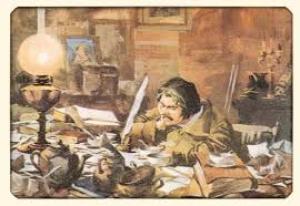
![]()
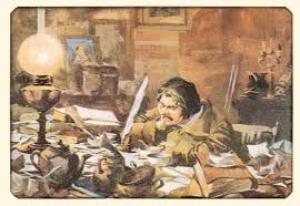
![]()
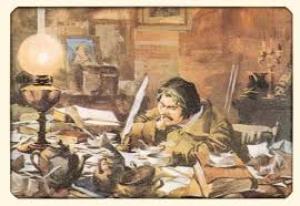
![]()
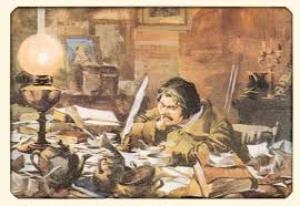
![]()
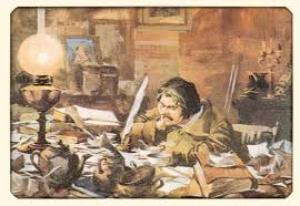
![]()
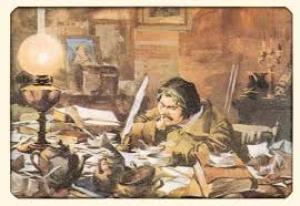
![]()
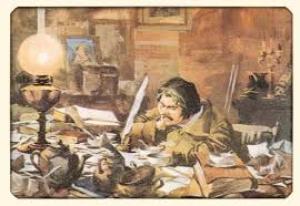
![]()
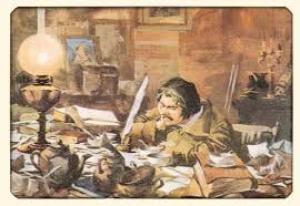
![]()
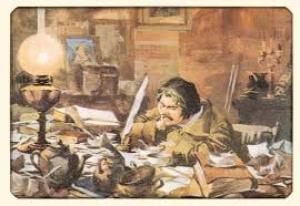
![]()
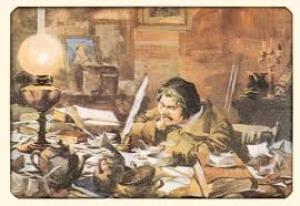
![]()

![]()


![]()

![]()


![]()

![]()


![]()
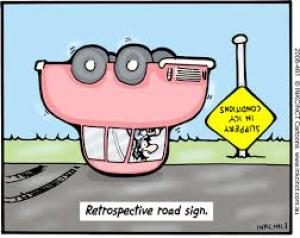
![]()

![]()
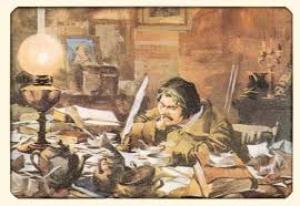
![]()